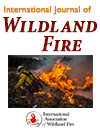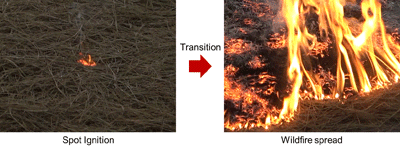International Journal of Wildland Fire
Volume 33
Number 7 2024
This paper summarises data on wildland fire evacuations in Canada between 1980 and 2021. There were 1393 wildland fire evacuation events with 576,747 people evacuated, costing approximately CAD4.6 billion CDN including productivity losses.
Heatwaves, dynamic fire–atmosphere interactions and increased fuel availability caused by drought are likely to amplify fire behaviour under climate change. We review meteorological dynamics contributing to enhanced fire behaviour during heatwaves using examples from the 2019–20 Australian Black Summer bushfires and examine potential challenges posed for future fire management.
The validity of fuel hazard rating for assessment of fuels in Australian forests was reviewed. The principles underpinning the rating method were shown to be unfounded, with ratings found to be neither related to physical fuel characteristics nor fire behaviour potential. Their application in Australian fire management and research is unwarranted.
This study compares the flammability of live and dead vegetation at a range of moisture contents and particle sizes. Live fuel took longer to ignite but burned faster and more intensely than dead fuel of the same moisture content, emphasising the importance of live fuel flammability in fire prediction models.
Wildland fires are often initiated by small spot ignition sources. Their transition into wildfire spread has an initial acceleration phase, and the growth of a burned area of the fuel bed follows a power law dependence in time. Such a trend is almost independent of the ignition source and can be extended over relatively long times.
Prescribed fire has a positive effect on forage mineral content and has the potential to reduce mineral supplementation costs and improve cow performance.
Observation composed of data from multiple moments is asynchronous observation, which will bring errors when performing data assimilation. This paper proposes a distributed strategy combined with the Ensemble Transform Kalman filter for asynchronous observation. It could conduct the analysis step immediately by a new matching scheme between prediction and observation.






